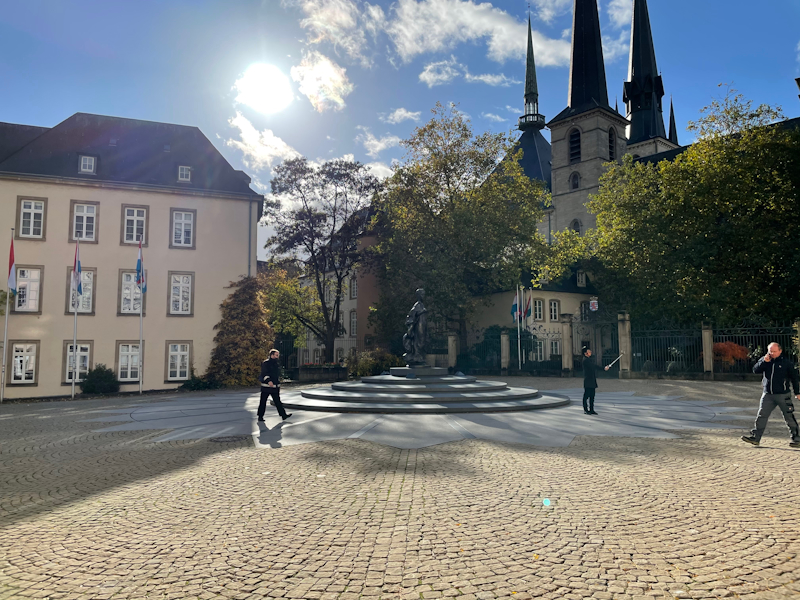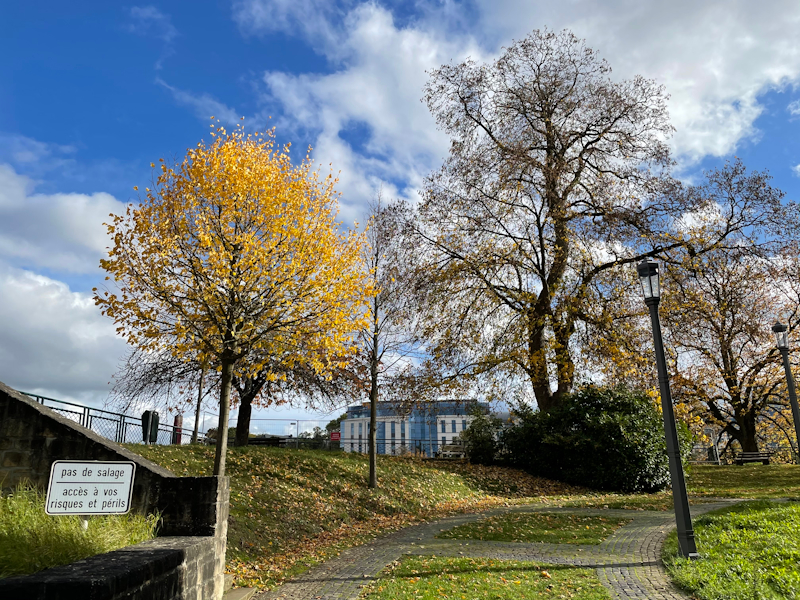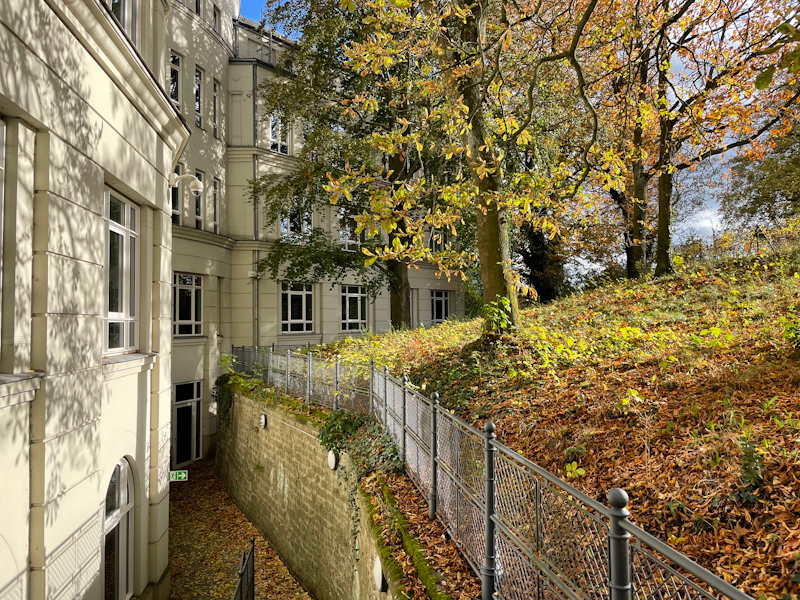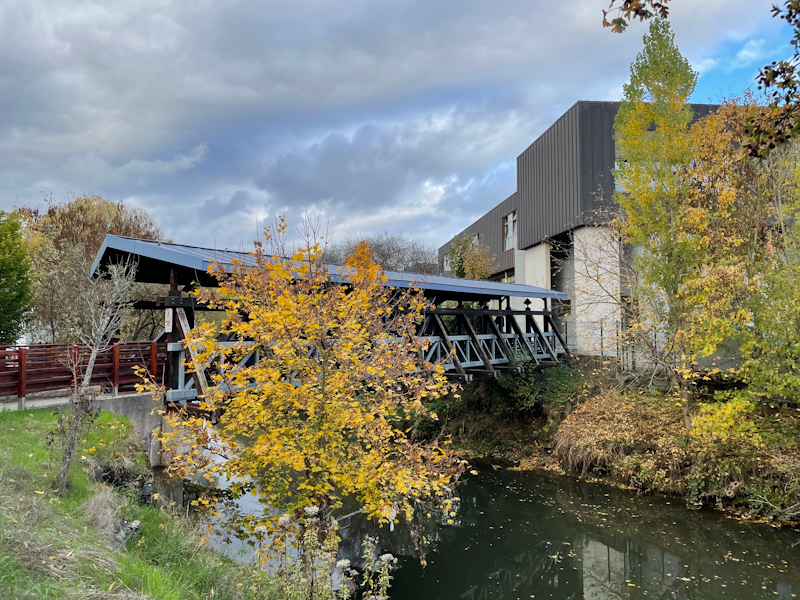The iPhone 12 & 12 Pro Review: New Design and Diminishing Returns
by Andrei Frumusanu on November 30, 2020 8:30 AM EST- Posted in
- Mobile
- Apple
- Smartphones
- Apple A14
- iPhone 12
- iPhone 12 Pro
Camera - Daylight Evaluation
The iPhone’s 12 and 12 Pro’s camera setup we’re reviewing today isn’t very exciting when looking at the paper specifications. Compared to the iPhone 11 Pro, the 12 Pro’s only real change is a new optics system on the part of the main camera, increasing the aperture from f/1.8 to f/1.6. The telephoto module and ultra-wide angle both remain seemingly the same at 12MP f/2.0 at 52mm equivalent, and 12MP f/2.4 at 13mm equivalent.
Where things might have changed more substantially is on the software processing side of things, where Apple has promised new improved HDR algorithms, enabled by the new processing power of the A14 SoC.
We’re limiting the comparison pictures here to the iPhone 12 Pro, with the iPhone 12 of course lacking the telephoto module but otherwise having identical hardware, the iPhone 11 Pro, as well as the latest Samsung flagship in the form of the Note20 Ultra, and S20+, as well as a Pixel 4 for the daylight pictures.
I’m including a Fujifilm X-T30 mirrorless ILC with an 18-55mm f/2.8-4 as a reference camera for the sake of colour accuracy comparisons. The shots here have been edited for dynamic range recovery and my best effort reproduction of the actual scenes.

[ iPhone 12 Pro ] [ iPhone 11 Pro ]
[ Note20 Ultra (S) ] [ S20+ (E) ]
[ Pixel 4 ] [ X-T30 ]
In this first scene I tried a worse-case scenario for the phones, shooting a contrasty scene against the sun, fully stressing the HDR algorithms of the cameras as well as the optics.
The new iPhone 12 Pro’s main camera doesn’t change the composition and exposure of the scene all too much compared to the iPhone 11 Pro, however we do see quite a bit better contrast. The sky’s discoloration around the sun is also less pronounced than on the iPhone 11 Pro, both signs that the new optics are of a high quality.
On the ultra-wide angle, we’re also seeing improved contrast – given that the hardware looks to be the same this would rather point out to an improved handling of HDR processing on the part of the new phone.

[ iPhone 12 Pro ] [ iPhone 11 Pro ]
[ Note20 Ultra (S) ] [ S20+ (E) ]
[ Pixel 4 ] [ X-T30 ]
The weather was quite cloudy during the shooting of these scenes but I tried my best to capture consistent shots between the phones. What’s immediately noticeable across all the shots of the new iPhone 12 Pro versus the 11 Pro is that while colours and general exposure is similar, the 12 produces higher contrast results which pop out more than on the predecessor.
On the telephoto module, oddly enough it feels as if things aren’t quite as detailed on the new phone as we’re seeing a HDR-like smudging of fine details such as the foliage and roof tiles of the scene. The main cameras are about the same, while on the ultra-wide angle I’d actually say the 12 Pro is able to preserve more details.

[ iPhone 12 Pro ] [ iPhone 11 Pro ]
[ Note20 Ultra (S) ] [ S20+ (E) ]
[ Pixel 4 ] [ X-T30 ]
In this next scene you’d be hard-pressed to differentiate the new iPhone. The only real difference on the part of the main camera I’m seeing are actually less defined shadows compared to the iPhone 11 Pro.
On the ultra-wide module, things change more dramatically, with much better detail retention on the new phone. Here we’re also seeing a large change in perspective correction between the two generations, especially in the corners of the image.
Compared to the competition, Apple doesn’t fare as well in terms of details as the Samsung phones are able to retain quite significantly more finer details throughout the scene while the iPhones seem to be smudging things out through the processing. Samsung’s HDR on the ultra-wide is also able to retain a better dynamic range, with more details in the shadows having been preserved.

[ iPhone 12 Pro ] [ iPhone 11 Pro ]
[ Note20 Ultra (S) ] [ S20+ (E) ]
[ Pixel 4 ] [ X-T30 ]
In this next scene it’s again visible that the new phone is able to showcase higher contrast levels. One thing that I don’t like very much on the Apple phones or the Pixel is the colour temperature which is quite too warm for this scene, being quite inaccurate compared to the real scene at the time and what the Fuji was able to capture. The Samsung phones aren’t quite as off and the best amongst the phones here.

[ iPhone 12 Pro ] [ iPhone 11 Pro ]
[ Note20 Ultra (S) ] [ S20+ (E) ]
[ Pixel 4 ] [ X-T30 ]
This is also a scene where the colour temperature of the new iPhone 12 seems to have gotten worse, being far too warm again compared to the actual scene as well as warmer than the 11, with the Samsung phones being far better in that regard.
HDR processing is much improved, especially noticeable on the ultra-wide of the new iPhone which retains a lot more details and handling of tones.

[ iPhone 12 Pro ] [ iPhone 11 Pro ]
[ Note20 Ultra (S) ] [ S20+ (E) ]
[ Pixel 4 ] [ X-T30 ]
Here again, the 12 produces a warmer picture than the 11, and veers off further away from the actual colour of the scene.
Apple opted to retain a traditional telephoto module setup on the new iPhone 12 Pro; what’s odd here is that again we’re seeing worse detail retention compared to the 11 Pro even though the hardware should in theory be the same.
This is especially visible when you have to user higher digital zooming, as the 5x magnification of the iPhone 12 Pro looks to me considerably worse than the 11 Pro. It’s as if there’s a heavy layer of noise reduction applied to the new phone’s camera processing on this new module.
Naturally, the 2x optical module can’t compete against some of the newer, more exotic camera solutions such as on the Note20 Ultra, but even the S20+’s 64MP unit using cropping and digital zooming vastly outperforms the telephoto module of the iPhone.

[ iPhone 12 Pro ] [ iPhone 11 Pro ]
[ Note20 Ultra (S) ] [ S20+ (E) ]
[ Pixel 4 ] [ X-T30 ]
This scene is a more noticeable improvement for the iPhone 12 Pro, with better HDR tone mapping as well as a better, more accurate colour temperature, although it’s still quite far off from reality, closest matched by the Note20 Ultra which has a near perfect reproduction.

[ iPhone 12 Pro ] [ iPhone 11 Pro ]
[ Note20 Ultra (S) ] [ S20+ (E) ]
[ Pixel 4 ] [ X-T30 ]
This last scene didn’t have a very high dynamic range as it was getting almost fully overcast; the new iPhone 12 behaved quite weirdly in terms of exposure of the foliage, as it lost saturation and is far too grey compared to the more accurate iPhone 11 shot. The Pixel 4 here had the best reproduction of the actual scene in terms of exposure and colours.
Daylight Conclusion: Better HDR, in Some Situations
Overall, the iPhone 12’s biggest changes in daylight captures can be summed around the fact that it has a new HDR algorithm, that in the majority of cases, produces better and higher contrast results. On the main camera, it’s a general positive although there’s a few scenes where for some reason the iPhone 12 processing fared off worse in terms of colour temperature and colour accuracy. Although the iPhone 12 performed well here overall, the main camera didn’t handle things as detailed or as accurately as the Note20 Ultra.
The ultra-wide angle seems to be universally improved this generation and that’s a much welcome change for the new devices: it showcases much better detail retention as well as better HDR processing. It’s still not quite at the same level as Samsung’s unit here but it’s much closer than before.
What’s quite disappointing on the new iPhone 12 Pro is the telephoto module. I felt that it universally was worse off than the 11 Pro due to the fact that it just couldn’t match the detail retention of its predecessor. I think this may be due to the new HDR processing that merges subsequent captures together. In any case, it doesn’t hold a candle to the competitions telephoto solutions which are significantly superior in hardware capabilities.










101 Comments
View All Comments
DejayC - Monday, November 30, 2020 - link
I find the flat edges of my iPhone 12 mini to be easier to grip on to than the curved edges of the older iPhones.FunBunny2 - Monday, November 30, 2020 - link
I was just about to post just that. could it be that short people with small hands are the only ones to complain about flat edged phones (and other things)? those for 4 edges, intelligently chamfered of course, are what give you purchased to hold on to that slippery thing.jeremyshaw - Monday, November 30, 2020 - link
I think completely flat edges work better on smaller phones. Mini, 5, 5S, 5C, etc. 4 and 4S as well. Though the 4 and 4S were "technically" flat, they did have the actual back and screen protruding enough to be a stepped approximation of a curved edge.xaneo - Saturday, December 26, 2020 - link
I'm jumping onto the flat edges bandwagon, all for it.milkywayer - Wednesday, December 2, 2020 - link
I still don't understand what makes the iPhone 12 worth ~$850 after tax compared to iPhone 11 that apples website is selling for $640~? Can someone explain?My biggest gripe with iOS is it kills my previous app pretty fast e.g. I could be watching YouTube or browsing a chrome tab but if I switch to reddit and or then whatsapp and then come back to the chrome or youtube, it'll make likely reload the entire app/page and I lose my progress.
I got tired of the small keyboard on my 2020 iphone SE and was going back and forth between picking iPhone 11 vs iPhone 12 and when I realized the 13 still has the same 4gb RAM, it was an easy decision going for the iphone 11 as both have the same display size and except for the tiny bit faster cpu which I probably wouldn't have noticed browsing chrome or reddit and the oled screen which isn't a big deal.
I couldn't justify spending almost 35-40% more for a tiny tiny upgrade.
What I would love for would be to get a bigger screen size like the pro max but apple has prices those out of my budget and most people's budgets I'd assume.
Frantisek - Friday, December 4, 2020 - link
I guess very durable screen on 12 can pay for itself.Speedfriend - Sunday, December 6, 2020 - link
Your point about iOS is one of the main reasons I don't use an iPhone. I day trade and iOS suspending apps in the background means that I have switched quickly to a trading app to check prices not realising they are totally out of date. Totally uselessblackcrayon - Thursday, December 10, 2020 - link
That sounds like that particular app doesn't work properly. Apps can refresh in the background, but even if not, why would it take more than a second to update from waking a suspended app?ZGamer - Monday, December 7, 2020 - link
12 Pro models ship with 6GB ram vs 4GB.As with everything it depends on which models your looking and how your looking to buy. If looking at purchasing outright for some of the mvno carriers or prepaid service the 11 is a better deal. If looking at deals with bill pay credits and other incentives it can be very cheap to get a 12.
Sales around Black Friday had the iPhone 12 for free with qualifying trade and bill pay credits....12 Pro for $99 and 12 Pro Max for $199 if you had the right set of circumstances (new line/port-in only for AT&T and Best Buy).
In general year or year performance gains are generally pretty small, it's the two to five year old devices that can see larger performance improvements.....and a fresh battery.
ebernet - Wednesday, December 9, 2020 - link
@milkywayer these are some of the reasons that would lead me to pick a 12 over an 11...1. The iPhone 11 is an LCD screen instead of OLED, with a 2x Retina display and 1792‑by‑828‑pixel resolution at 326 ppi. The 12 is OLED with a 3 pixel per point for 2532-by-1170-pixel resolution at 460 ppi. The OLED allows the screen to be closer to the edge. I would think that is the biggest reason.
2. Significantly better night mode
3. Only 32% more, not 35-40
There are a bunch of other reasons to choose the 12 over the 11, but for me the change from LCD to OLED at MUCH higher pixel resolution and a more durable screen is sufficient.
That being said, I am still on my XS Max and will be waiting for the 13. There were days when I would upgrade my iPhone EVERY year (original all the way through the 4S). As the curve of improvements slowed down I went to every other year (5S, 6S Plus). Now I am on a 3 year tick and the XS Max is plenty good enough for me. I am looking forward to HOPEFULLY some kind of better optical zoom in the iPhone 13. However, if this was my tock year I'd be going for a 12 Pro Max with 256, but if I had to choose between an 11 and a 12 it would be a NO brainer, much more than last year choosing between the 11 and the XR (much more of a valid comparison because they both shared very similar screens). The screen on the 12 is on its own worth the price delta between the 12 and 11.